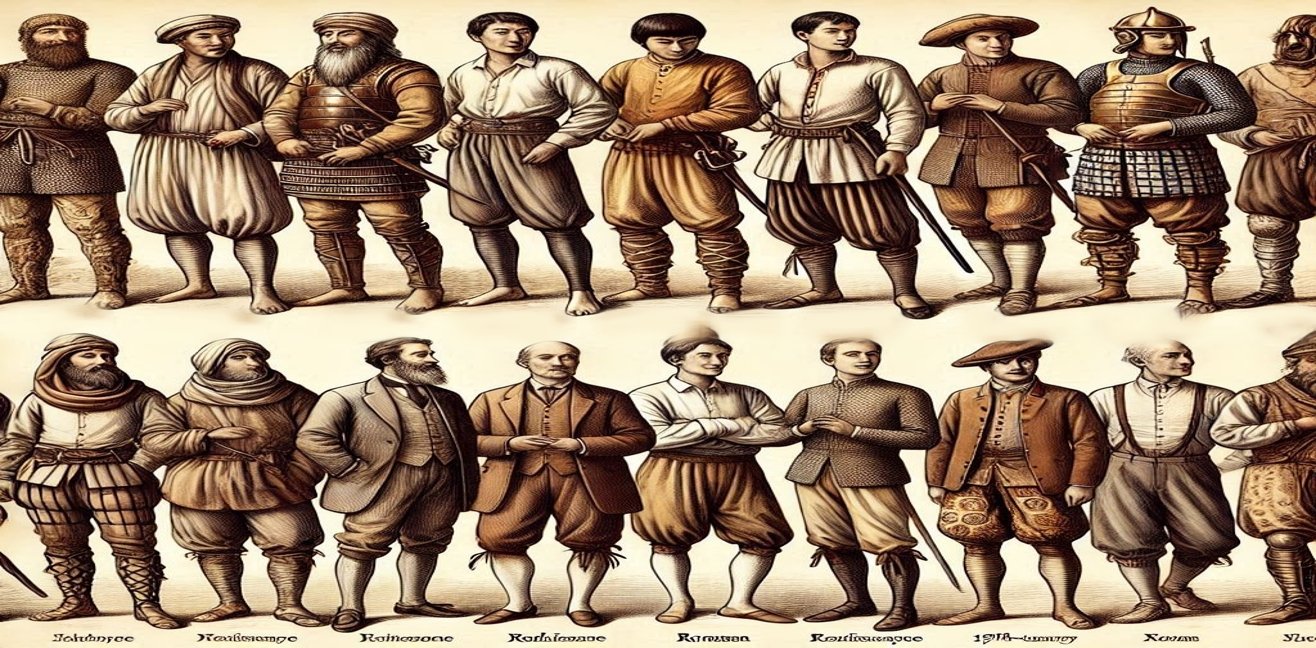Pants are now a fundamental piece of clothing found in almost everyone’s wardrobe. However, their history is rooted in ancient times and reflects an intriguing evolution. In this article, we’ll take a journey through the invention of pants and how they have evolved throughout history.
The First Pants: Meeting the Needs of the Ancient World
The origins of pants date back approximately 3,000 years to the 10th century BCE. The first pants were used by nomadic peoples living on the Eurasian steppes. Designed primarily for horseback riders, these garments were created to provide comfort while riding. Made from materials like wool or leather, these early pants also offered protection against cold weather.
Pants in China and Central Asia
Significant evidence of early pant usage was found in China’s Tarim Basin. In 2014, two pairs of woolen pants, believed to date back to the 13th century BCE, were discovered. These pants are valuable artifacts that showcase the craftsmanship and practical purposes of clothing during that time. The spread of pants in this region was largely due to their advantages in activities such as horseback riding and warfare.
Pants in Ancient Greece and Rome
In Ancient Greece and Rome, pants were often associated with “barbarians,” or peoples living beyond the borders of the empires. Initially, Romans did not adopt pants, preferring traditional garments like the toga. However, over time, Roman soldiers began wearing pants, particularly when fighting in the cold northern regions. This contributed to the gradual adoption of pants across the Roman Empire.
Pants in the Middle Ages and the Renaissance
During the Middle Ages, pants became increasingly popular across Europe and evolved in various forms. They were often knee-length and resembled tights. In the Renaissance period, pants became more stylish and decorative. Men typically wore knee-length pants paired with long stockings and elegant jackets.
The Modern Era of Pants
In the 18th and 19th centuries, pants began to take on their modern form. Following the French Revolution, distinctions in clothing between social classes diminished, and pants gained acceptance among the non-aristocratic classes. By the mid-19th century, pants resembled today’s designs more closely.
With the Industrial Revolution, pants became a staple of everyday clothing for the working class. During this time, jeans, popularized by Levi Strauss in America, became a durable work garment.
Women and Pants
For many years, pants were considered exclusively men’s clothing. However, in the early 20th century, women also began wearing pants. During World War I and World War II, as women entered the workforce in greater numbers, pants became more common for women. The 1960s and 1970s marked a turning point when pants were fully embraced in women’s fashion.
Pants Today
Today, pants are an indispensable clothing item for both men and women. They come in a wide variety of styles, colors, and fabrics, adapting to changing fashion trends. From sports pants to formal trousers, jeans to leggings, the diversity in pants is immense.
Conclusion
Pants have undergone significant changes over the centuries, serving different purposes across various cultures and periods. Since their inception, they have become an essential garment due to their functionality and comfort. Today, the evolution of pants continues, influencing and being influenced by fashion trends.
The history of pants is not just the story of a piece of clothing but also a reflection of humanity’s cultural and social evolution. Understanding their past and development offers valuable insight into the changing dynamics of fashion and human life.
References and Further Reading
- Liza Picard, “Victorian London: The Life of a City 1840-1870” – A comprehensive work detailing fashion and daily life in 19th-century London.
- James Laver, “Costume and Fashion: A Concise History” – A broad overview of clothing and fashion history, including the evolution of pants.
- “Pants: A History” by Maxine Berg and Elizabeth Eger – An in-depth study of the historical development and cultural impact of pants.
These sources are excellent for those who wish to delve deeper into the history of pants.

